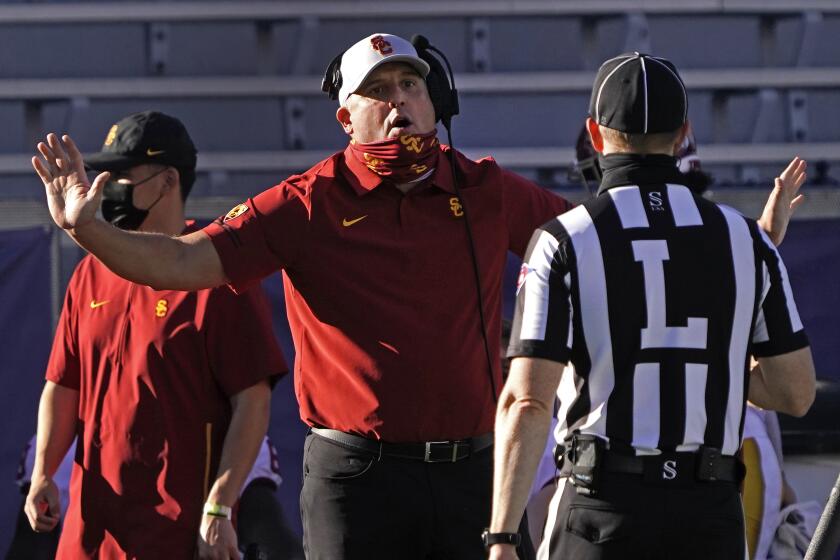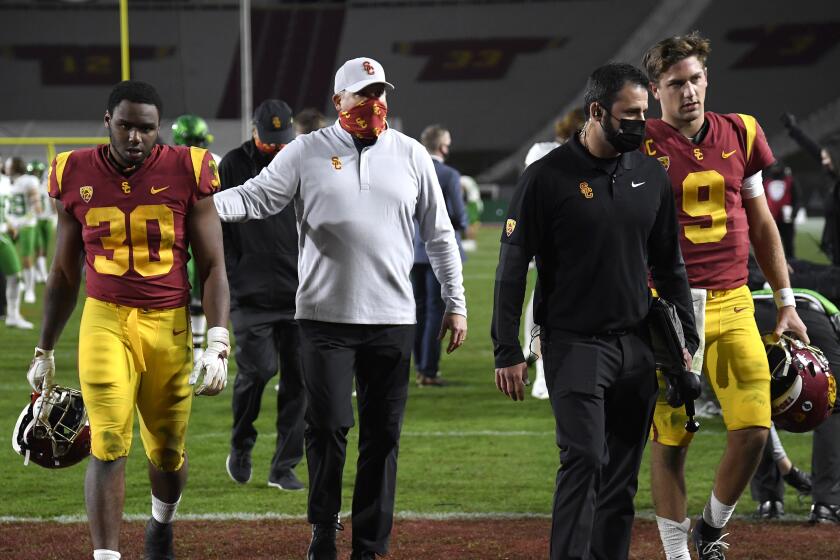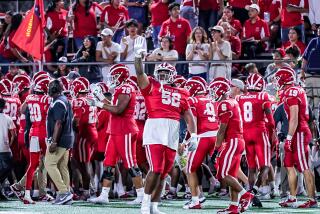USC running back Markese Stepp enters transfer portal

When he first burst onto the scene last season, Markese Stepp seemed destined to be USCâs next bellcow back. Instead, after a year in which he battled multiple injuries and the Trojans run game diminished, the redshirt sophomore is now in search of a new backfield.
Stepp officially entered the NCAA transfer portal on Monday, less than two weeks after he led USC in rushing attempts (13) in a Pac-12 title loss to Oregon.
It was a disappointing finish to a disappointing season for Stepp, whose redshirt freshman season ended with an ankle injury that lingered until the start of the 2020 season. That injury slowed his progress to start this shortened campaign, before he also suffered a turf toe injury and a strained pectoral, the latter of which cost him a game.
He finished with just 165 yards in 45 carries, nearly three yards per carry fewer than he registered as a redshirt freshman last season. Thirty percent of that total came on one run â a 49-yard sprint against Arizona.
After a 5-1 season that ended in a disappointing loss to Oregon in the Pac-12 title game, it seems USC is spinning its wheels under Clay Helton.
It wasnât only injuries that sapped Steppâs effectiveness. USCâs rushing attack was inefficient in every regard, racking up an average of just 97 yards per game, which ranked 120th of 127 teams.
Stepp opened the season as the Trojansâ presumed top back, tallying 14 and 13 carries in USCâs first two games. But after missing the midseason trip to Utah due to injury, Steppâs role in the offense diminished rapidly, with little explanation. He had just six carries over the next two games as USCâs run game took a backseat to its passing attack.
Over its final three games combined, USC managed just 138 rushing yards, a total 90 other programs eclipsed on a per-game basis.
Against UCLA, Stepp received just one carry, and USC coach Clay Helton admitted that the staff had opted to lean largely on seniors Vavae Malepeai and Stephen Carr. When Malepeai, USCâs leading rusher, was ruled out of the Pac-12 title game a week later with an injury, Helton turned back to Stepp, suggesting earlier in the week that he was âon the verge of exploding, to be honest with you.â
âIt has not been the easiest of roads in dealing with an injury, especially the one he had at running back,â Helton said. âAnd to go through some dings early in this season, what I appreciate about Markese is when heâs called upon he does his job.â
Stepp managed just 25 yards in that game, as Oregonâs defense manhandled USC up front, leaving the Trojansâ rushing attack in complete shambles at seasonâs end.
Where that backfield stands heading into next season is uncertain. Malepeai and Carr have decisions to make on whether they plan to return for a fifth season of eligibility afforded to them by the NCAA due to the pandemic or enter the draft. If both declare and Stepp sticks to his decision to transfer, that would leave USC with just one returning scholarship running back: Kenan Christon.
A day after losing to Oregon in the Pac-12 title game, USC announced it will not play in a bowl game because of the risks associated with COVID-19.
The speedy sophomore had just 10 carries for 73 yards this season, but impressed a year ago when he was thrust into action as a true freshman.
The Trojans did sign a four-star running back in its 2021 class, and itâs possible that Brandon Campbell could step into a significant role next season alongside Christon in USCâs backfield.
But as the dust settles in that backfield over the coming weeks, the more pertinent concern may be how USC plans to fix a rushing attack that was either ineffective or ignored through much of 2020.
More to Read
Go beyond the scoreboard
Get the latest on L.A.'s teams in the daily Sports Report newsletter.
You may occasionally receive promotional content from the Los Angeles Times.









